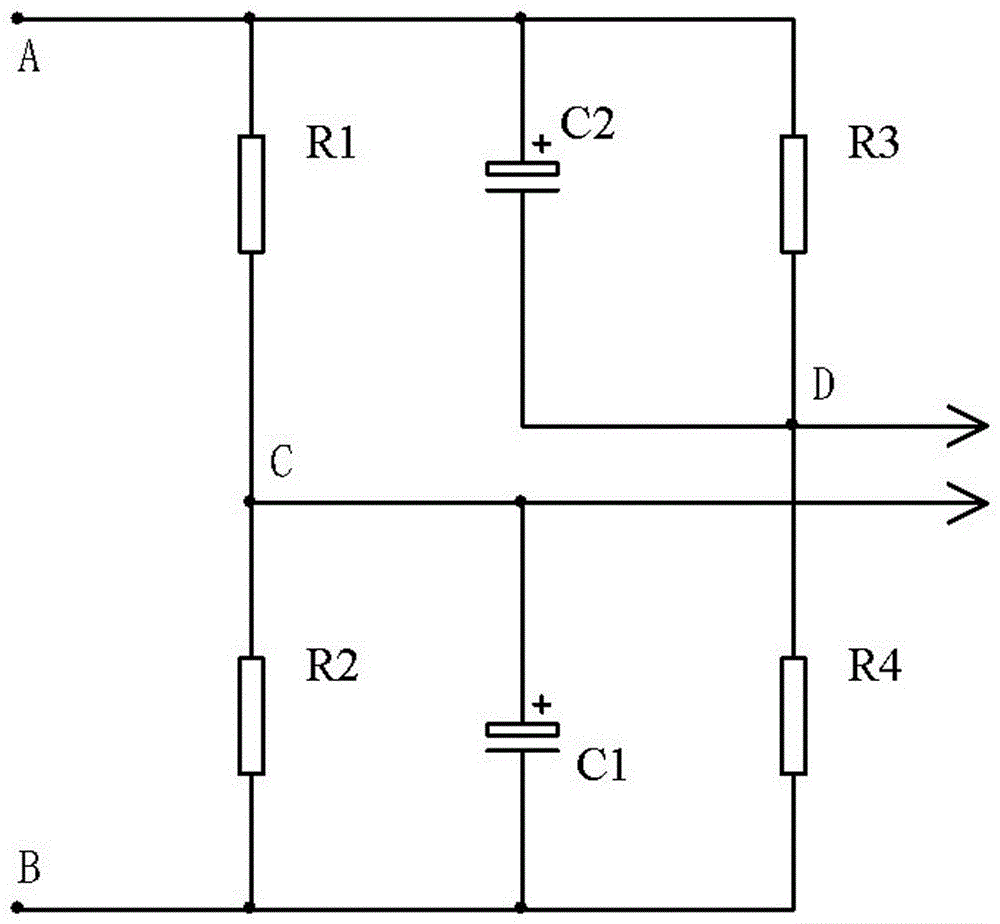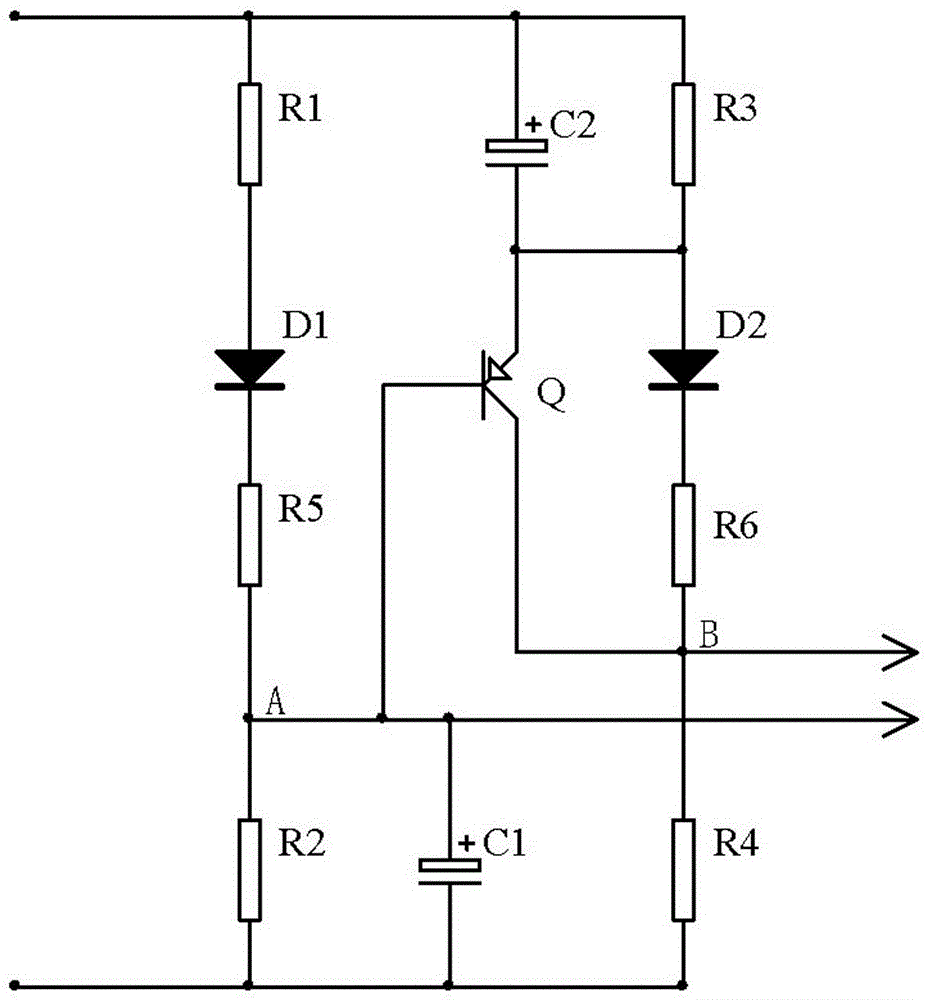Voltage fluctuation quantitative detection circuit/device
A technology of quantitative detection and detection circuit, applied in the direction of measurement device, measurement of electrical variables, measurement of current/voltage, etc., can solve the problem of not being able to provide more accurate quantitative values in the state of voltage change, not being able to continuously quantitatively track and detect for a long time, and not having quantitative accuracy. Detection and other problems, to achieve the effect of good promotion and application value, light weight and low cost
- Summary
- Abstract
- Description
- Claims
- Application Information
AI Technical Summary
Problems solved by technology
Method used
Image
Examples
Embodiment 1
[0020] see figure 1 , the voltage rise and fall quantitative detection device (or circuit, the same below) of the present invention adopts resistance R1 and resistance R2 in series, resistance R3 and resistance R4 in series, and then forms a resistance bridge connected in parallel to the two ends of the object to be detected. A clamping capacitor C1 is set in parallel with the bridge arm resistance, and the resistance bridge and the clamping capacitor C1 together form a terminal voltage change rate detection circuit; the output terminal of the terminal voltage change rate detection circuit is the detected The terminal voltage change signal output terminal of the object outputs the detected voltage change signal to the outside.
[0021] In the voltage rise and fall quantitative detection device of this embodiment, a clamping capacitor C1 is provided on one arm of the resistance bridge, and the detected terminal voltage signal has a relatively small change range.
[0022] In th...
Embodiment 2
[0024] see figure 1 , the voltage rise and fall quantitative detection device (or circuit) of this embodiment is different from Embodiment 1 in that: the diagonal bridge arm of the resistance bridge and the bridge arm resistance are respectively provided with clamping capacitors C1 and C2 in parallel, The resistance bridge and the clamping capacitors C1 and C2 jointly form a terminal voltage change rate detection circuit. The capacitance values of the two clamping capacitors C1 and C2 are correspondingly consistent and equal in size.
[0025] Similarly, when the parameters of each component of the resistance bridge are equal (the corresponding bridge arm resistances are equal), the output is linearly synchronized with the voltage rise, and the amplitude is the largest. When the component values are asymmetrical, the detected signal amplitude decreases and the linearity is distorted.
Embodiment 3
[0027] see figure 1 , the voltage rise and fall quantitative detection device of this embodiment is different from Embodiment 2 in that: in the terminal voltage change rate detection circuit, the resistance values of the two resistors of the upper bridge arm are the same, and the two resistors of the lower bridge arm The resistance values of the two clamping capacitors are the same, and the capacitance values of the two clamping capacitors are equal.
[0028] The working principle of the voltage rise and fall quantitative detection device of this embodiment is as follows:
[0029] When the influence of capacitors C1 and C2 is not considered, no matter how the voltage at both ends of the resistance bridge changes, and no matter how fast the voltage rises, the potentials of nodes C and D rise synchronously and are always equal; after adding capacitors C1 and C2, due to The voltage at both ends of the capacitor cannot change abruptly, and the rising range of the battery te...
PUM
 Login to View More
Login to View More Abstract
Description
Claims
Application Information
 Login to View More
Login to View More - R&D
- Intellectual Property
- Life Sciences
- Materials
- Tech Scout
- Unparalleled Data Quality
- Higher Quality Content
- 60% Fewer Hallucinations
Browse by: Latest US Patents, China's latest patents, Technical Efficacy Thesaurus, Application Domain, Technology Topic, Popular Technical Reports.
© 2025 PatSnap. All rights reserved.Legal|Privacy policy|Modern Slavery Act Transparency Statement|Sitemap|About US| Contact US: help@patsnap.com



